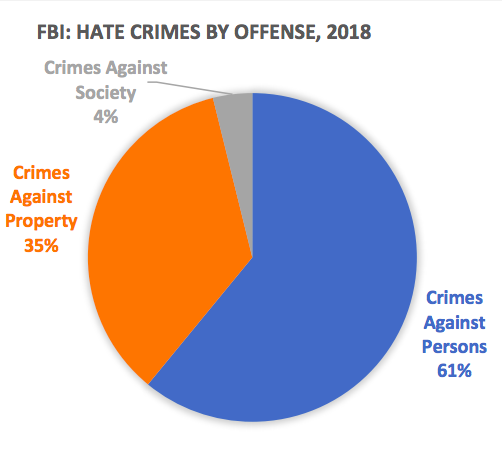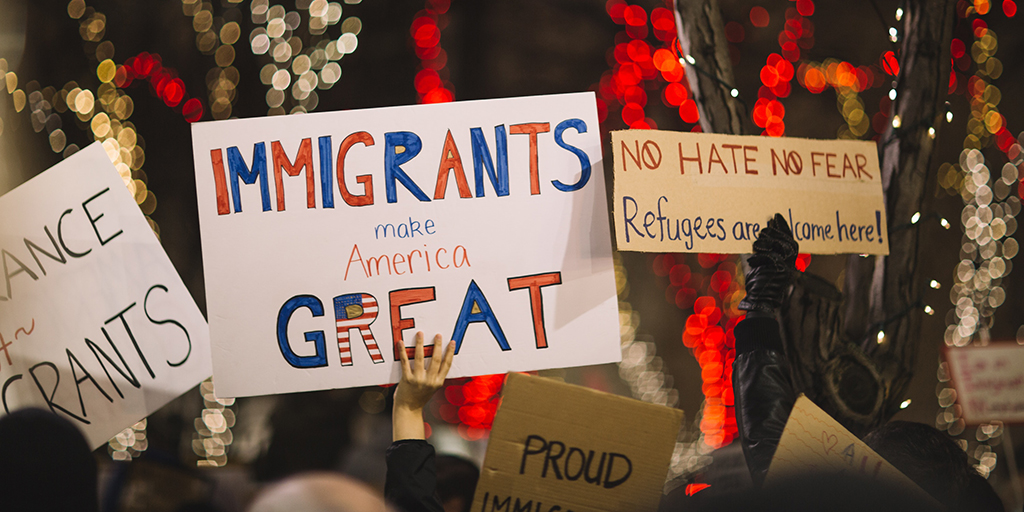
Share On Social!
The number of victims from anti-Latino hate crimes rose by over 21% last year, according to new FBI data.
While the total number of hate crimes fell slightly to 7,120 from 2017 to 2018, the amount of hate crimes involving physical violence — intimidation, assault, and homicide — reached a 16-year high. The number of hate crime homicides hit its highest number ever: 24 murder victims.
This, coupled with the rise in anti-Latino hate crimes, is alarming, experts say.
“We’re seeing a leaner and meaner type of hate crime going on,” Brian Levin, director of the Center for the Study of Hate and Extremism at California State University, San Bernardino, said in a statement.
The Politics of Hate: Anti-Latino Biases
Some experts are connecting the hate crime data and current political ideals.

“The data [exposes] a disturbing trend in our politics — and the impact it is having on people,” said Maya Berry, executive director of the Arab American Institute.
Similar trends have occurred in the past.
“We’re seeing the swapping of one derided group in the social-political arena for another,” said Levin. “Attacks against Muslims peaked around 2016 when terrorism was the concern. Now immigration is the No. 1 issue, and Latinos are being targeted.”
The FBI’s report marks the third consecutive year where Latino-targeted hate crimes have increased.
In 2016, there were 344 incidents of anti-Latino hate crimes. In 2018, there were 485. This is about a 41% increase in just a few years.
Janet Murguía, president and CEO of the Latino civil rights organization UnidosUS, places some of the responsibility on President Donald Trump, according to NPR.
“President Trump frequently refers to Latinos in the most hateful and bigoted ways, and words matter,” she said. “Having just visited El Paso and hearing first hand from the victims of the tragic shooting there, I know that hateful words have hateful consequences, and can result in violence and even death.”
Earlier this year, a mass shooting occurred at a Walmart in El Paso, Texas. The suspected gunman directly confessed to targeting “Mexicans.”
Latinos Facing Heavy Bias
Debates continue to rage over President Trump’s hardline immigration policies, such as public charge.
But, even outside the political realm, Latinos face bias and anti-Latino sentiments.
 For example, California media portray immigrants with derogatory descriptions with regularity, while immigrant voices and healthcare are rarely covered, according to a new report by Berkeley Media Studies Group (BMSG).
For example, California media portray immigrants with derogatory descriptions with regularity, while immigrant voices and healthcare are rarely covered, according to a new report by Berkeley Media Studies Group (BMSG).
These biases show up in the doctor’s office, too:
- Latino men are less likely to receive treatment for high-risk prostate cancer than White men.
- Latinas and other pregnant women of color face discrimination from healthcare providers. This is due not only due to their race, but also their socioeconomic status.
- White male doctors are less likely to prescribe pain medications to black patients than white patients.
- Minorities who visit an emergency room in the U.S. are less likely to receive prescriptions for certain medications than Whites.
Racism and implicit bias impacts Latino education, businesses, and mental health.
What Can We Do?
To start, we can take a quick test to see if we have any implicit biases.

Then we can seek training or help put an end to microaggressions, or check out stories of people who are overcoming biases and helping people do the same:
- Dr. Rogelio Saenz overcome implicit bias growing up and in his career to become a well-respected UT San Antonio researcher using data and demographics to set up social justice solutions.
- Dr. Jabraan Pasha created a workshop to spread awareness of implicit bias─the attitudes or stereotypes that affect our understanding, actions, and decisions unconsciously─in the healthcare system.
- Kelly Capatosto and the Kirwan Institute are generating significant research and training around on implicit bias.
We can learn to embrace immigrants. Get involved civic action to make a real difference!
By The Numbers
3
Big Excuses
people use to justify discriminatory behavior



